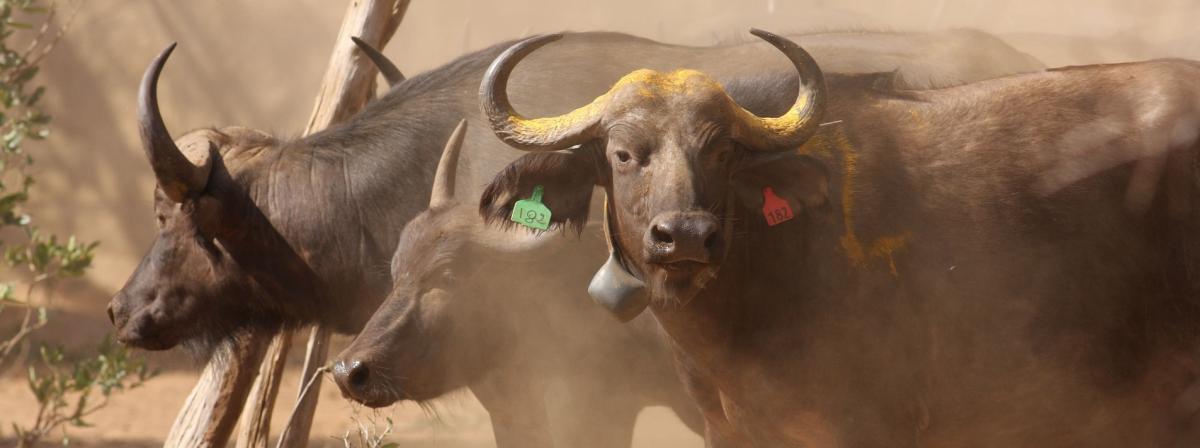- Home
- Worldwide
- CIRAD worldwide
- Projects
- TEMPO project
Remote sensing and spatial modelling of animal mobility - TEMPO

© D. Cornelis, CIRAD
Issues
Interfaces or ecotones, transition areas between two different types of habitats, play a leading role in outbreaks of infectious diseases in domestic animals and humans. These are generally hybrid zones between highly modified areas (communal zones) and protected areas (natural parks), in which domestic animal and human populations can interact with wild animal populations. The characterisation of these contacts is crucial to understand endemic and emerging zoonotic diseases and to develop tools for monitoring and control.
Description
The TEMPO project studies contacts between domestic and wild herbivores on the edge of protected areas in Southern Africa, a region with many national parks, where animal movements between natural and modified habitats are frequently observed.
Two types of diseases will be studied: one spread by direct transmission (foot and mouth disease), and a vector-borne disease spread by indirect transmission (Rift Valley fever). The project is structured around three parts:
- Using remote sensing to characterise and monitor the environmental determinants of the occupation of space and of movements of wild and domestic animals;
- Modelling space occupation dynamics, taking account of these environmental and anthropogenic determinants (livestock management);
- Modelling the risk of pathogen transmission between wild and domestic animal populations.
Expected changes
- The zones and periods of close contact between wild and domestic animals will be identified, which will be used to produce risk maps for the transmission of foot and mouth disease and Rift Valley fever.
- The findings of this research will be disseminated to the stakeholders and populations concerned.
Expected impacts
- In the longer-term, prevention of outbreaks of animal and zoonotic diseases in Southern Africa will be improved.
- The role of biodiversity in the regulation of pathogen populations will be recognised and protected.
- The peripheral zones of protected areas will adopt sustainable development practices that will ensure good territorial health.
Contract partner
IRD
























